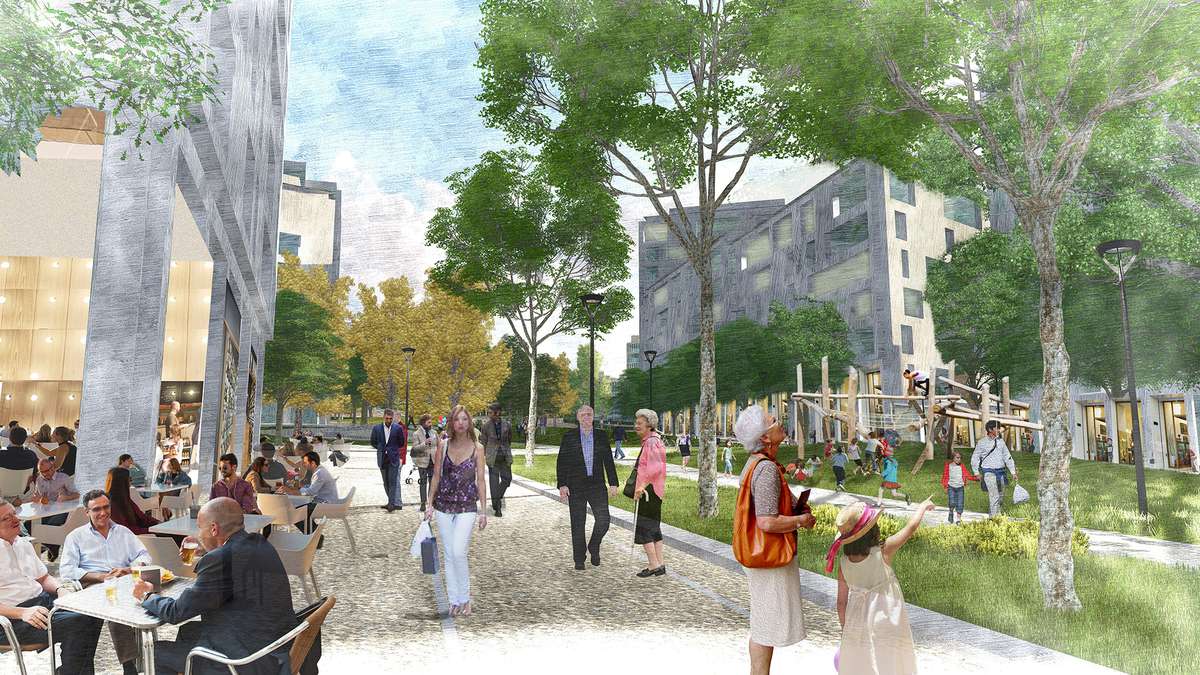What Is The Role Of Architecture In Creating Inclusive And Community-oriented Urban Spaces?

The way we interact with our surroundings has always been closely intertwined with our mental and physical well-being. Public spaces, in particular, offer us a unique opportunity to engage with our environment, interact with others, and build a sense of community. Thus, it is important to explore how architecture renewal can help improve public space and enhance our lives.
1. What is architecture renewal?
Architecture renewal refers to the process of revitalizing old or outdated buildings for contemporary use. It involves preserving the original design elements of the structure while incorporating modern features and functionality to make it more habitable and sustainable. Architecture renewal can significantly improve the aesthetic appeal of a building and its surroundings, making it more attractive to potential tenants and investors.
2. Public space: a vital component of urban life
Public spaces are an integral part of urban life as they offer a place for people to gather, relax, and socialize. They provide a sense of community and belonging and contribute to the overall well-being of the residents. Public spaces can be in the form of parks, squares, plazas, and other open areas where people can interact with their surroundings. Thus, it is crucial to maintain and improve public spaces to foster social interactions and promote a sense of community.
3. How architecture renewal can improve public space
Architecture renewal can play a crucial role in improving public space by creating aesthetically pleasing and functional structures that cater to the needs of the community. Here are some ways architecture renewal can help improve public spaces:
a) Adaptive reuse of buildings
Adaptive reuse of buildings involves converting old or abandoned buildings into new and functional spaces. For example, turning an old factory into a community center or a library. This process not only preserves the original character of the building but also creates a unique space that serves the needs of the community.
b) Incorporating green spaces
Incorporating green spaces such as parks, gardens, and small forests into the design of public spaces can help reduce the heat island effect, absorb carbon emissions, and improve air and water quality. These green spaces can also enhance the aesthetic appeal of public spaces and provide a space for people to relax and socialize.
c) Pedestrian-friendly environments
Designing public spaces to be pedestrian-friendly by incorporating sidewalks, bike lanes, and other pedestrian infrastructure can encourage people to walk or bike instead of using private vehicles. This, in turn, helps improve air quality and reduces traffic congestion, making the public space more pleasant and accessible to all.
d) Adding public art
Integrating public art into public spaces can make them more visually appealing and spark a sense of creativity and imagination among the residents. Public art can take many forms, such as sculptures, murals, and installations, and can be used to tell a story or convey a message.
4. Benefits of improving public space through architecture renewal
Improving public space through architecture renewal can have several benefits for the community, such as:
a) Improved mental health
Public spaces that are aesthetically pleasing and provide a sense of community can help improve mental health by reducing stress and increasing social interactions. Access to green spaces has also been linked to lower rates of depression and anxiety.
b) Increased property values
Improving public spaces in a neighborhood can lead to an increase in property values, making it more attractive to potential buyers and investors. This, in turn, can lead to more economic opportunities and growth for the community.
c) Improved social interactions
Public spaces that are designed for social interactions can help foster a sense of community and belonging. This, in turn, promotes a more cohesive and collaborative community that works towards common goals.
d) Environmentally sustainable
Designing public spaces to be environmentally sustainable can help reduce carbon emissions, improve air and water quality, and promote biodiversity. This, in turn, helps create a healthier environment for the residents and supports the overall well-being of the community.
5. Conclusion
The relationship between architecture renewal and public space is an important one that can significantly impact our lives. By incorporating sustainable and functional design elements into public spaces, we can create a more harmonious and livable environment that supports our physical and mental well-being. Through collaborative efforts and a commitment to improving public spaces, we can foster strong communities and a brighter future for all.




Post a Comment for "What Is The Role Of Architecture In Creating Inclusive And Community-oriented Urban Spaces?"